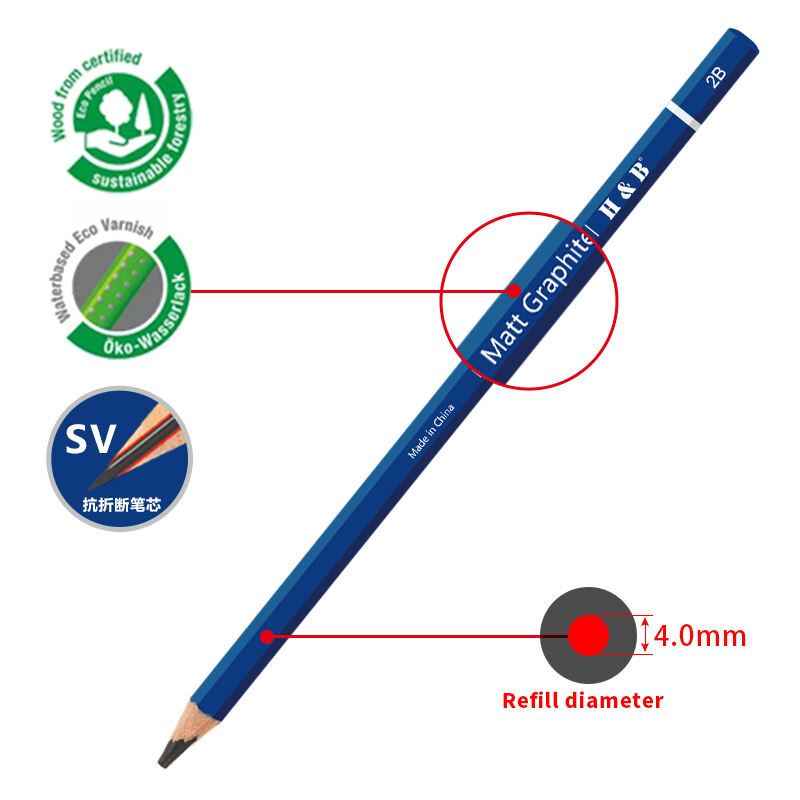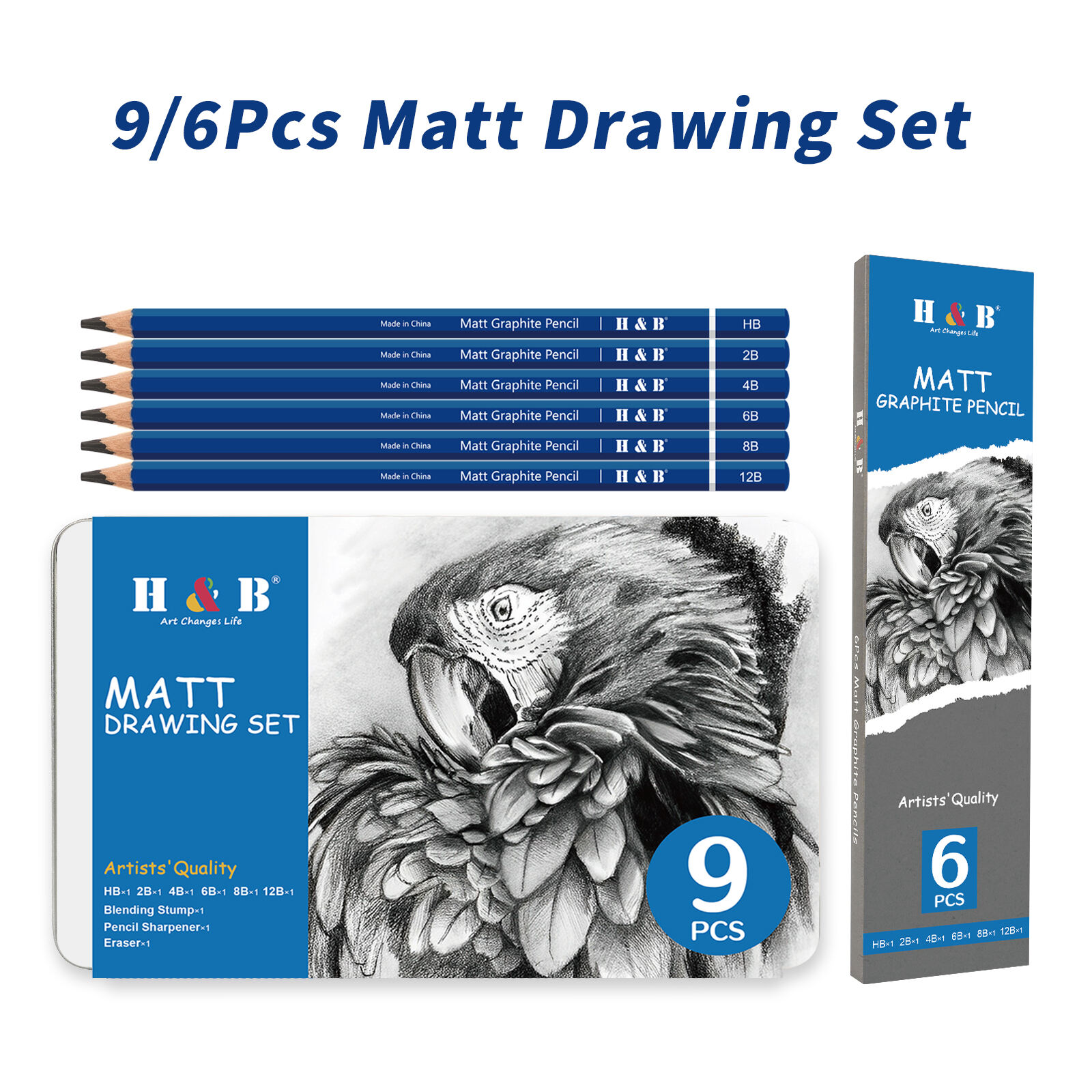Detallı Sənətdə Dəqiqlik və Idarəetmə
Nəzəkətli Xətlər Üçün Sıx Nöqtələr
Yaxşı rəssam qələmləri uzun müddət iti qalır, bu da kiçik detalları çəkərkən fərqi yaradır. Belə qələmlər xətlər üzərində daha yaxşı nəzarət imkanı verir və bu da illüstrasiyalar, texniki rəsmlər və ya sadə eskizlər kimi şeylər üçün xüsusilə vacibdir. Ucunu saxlayan qələmlər rəssamların onları itiləşdirmək üçün işi dayandırmalarına ehtiyac qalmadığından vaxt itkisini də azaldır. Bir rəssam belə deyib: "Təmiz və iti xətlər çəkməyə davam etmək yalnız vaxt qənaəti demək deyil, həm də bütün əsərin daha yaxşı görünməsinə səbəb olur." Beləliklə, axıllı əsərlər yaratmaq üçün axıllı axırı qalan qələmlər olduqca vacibdir.
Birləşmiş Qırmızı Tərkibi
Yaxşı qələmləri seçilən edən nədir? İçərisindəki qurğuna baxın. Keyfiyyətli qələmlər başdan sona qədər eyni keyfiyyətdə qurğu ehtiva edir, beləliklə də istifadə prosesində eyni şəkildə işləyirlər. Qurğu eyni xarakterdə olduqda, rəssamlar xətlərdə qıcıqlandırıcı təkanlar və ya tündlükdə dəyişikliklər olmadan daha hamar xətlər çəkə bilirlər. Həmçinin faktiki hiss də vacibdir. Rəssamlar bunu yaxşı bilirlər, çünki bu, onların kölgələmə qabiliyyətini və ətraflı işlər yaratmaq üçün birbaşa təsir göstərir. Əksər rəssamlar kiçik detallar üzərində işləyərkən etibarlı bir şey istəyirlər. Bir rəssam deyirdi ki, "Yaxşı qurğuya malik qələm mənə etibarlı xətlər çəkməyə imkan verir. Mürəkkəb hissələrdə kölgələri düzgün əks etdirmək üçün bu fərqlər hamısını dəyişir." Deməli, əslində, qurğunun eyni keyfiyyətdə olması yalnız yaxşı deyil, həm də dəqiq nəticələr almaq üçün vacibdir.
Profesional Səviyyəli Qırmızıların Dayanıqlılıq Fərdalığı
Kəsmə Azalması və Uzun Müddətli İstifadə
Böyük layihələr üzərində işləyən rəssamların bilir ki, qələmlər sıxlıqla basıldıqda yarılmaması çox vacibdir. Peşəkar səviyyəli qələmlər daha möhkəm hazırlanmışdır və ucuz alternativlərin etdiyi kimi dağılmadan ciddi təzyiqləri dəyə bilir. Daha yaxşı keyfiyyətli materiallardan hazırlanmış bu qrafit çubuqları əvəz edilməsi lazım gəlmədən daha uzun müddət davam gətirir. Çoxu rəssamlar standart qələmlərlə işləyərkən qırılan qələmləri əvəz etməyə çox vaxt sərf edir. Amma yaxşı keyfiyyətli qələmlərlə belə bir problem yoxdur. Qələm şiddətli eskiz çəkilişləri zamanı bütöv qalırsa, rəssamlar əvəzinə sınmış alətləri təmir etməyə və ya dəyişdirməyə vaxt sərf etmədən yaradıcılığa diqqət yetirə bilirlər. Hətta bəzi insanlar deyirlər ki, işləri daha tez başa çatdırırlar, çünki mühüm detalların ortasında qırılmış qrafitlər səbəbiylə diqqətləri yayındırılmır.
Zamanla Xərclərin Effektivliyi
Bəli, peşəkar səviyyəli qələmlər ilk baxışda daha bahalıya başa gəlir, amma əksər rəssamlar onların uzun müddətli perspektivdə hər qəpiyinə dəyər verir. Bu qələmlər əvəz edilməsi üçün daha uzun müddət davam edir və təchizat üçün daim mağazaya gedən zamanları azaldır. Sənaye rəqəmləri daha keyfiyyətli məhsullar əvəzinə ucuz alternativləri seçən zaman müntəzəm istifadədən bir neçə ay sonra təxminən 20-30 faiz qədər qənaət edilə biləcəyini göstərir. Amma bu qələmləri həqiqətən fərqləndirən şey çəkiliş zamanı onların nə qədər davamlı olmasıdır. Davamlı performans sayəsində qələmin sınması və ya hər şeyi ləkələməsi kimi narahat edici anlar azalır. Bundan əlavə, düzgün materiallardan istifadə etməklə əsərin son nəticəsi də daha yaxşı görünür.

Sanatçı ifadəsi üçün grafit səviyyələrini bilmək
H vs. B: Ton və teksturayı anlamaq
H və ya B karandaşından istifadə etmək üçün doğru vaxtı bilmək, rəsm işlərində düzgün tonları yaratmaqda vacib fərqi yaradır. Qrafit müxtəlif dərəcələrdə olur və hər birinin təsviri sənətçilər üçün əhəmiyyətlidir. H seriyasının qarandaşları daha sərt olub yüngül iz buraxır, dəqiq xətlər və detallar çəkmək üçün əlverişlidir. Digər tərəfdən, B karandaşlarının nüvəsi daha yumşaqdır və daha tünd rəng yaradır, bu da eskizlərdə kölgələri və kontrastları ön plana çıxarmağa kömək edir. Təcrübəli çəkənlərin çoxu müxtəlif qrafit dərəcələri ilə işləməyi öyrənməyin yeni imkanlar açdığını deyəcək. Bu, işıq və kölgə effektləri ilə oynamağa və səth toxumasına nəzarəti daha yaxşı həyata keçirməyə imkan verir. Eskiz çəkmə bacarıqlarını inkişaf etdirmək istəyən hər kəs üçün qarandaş sərtliyi ilə bağlı bu əsasları öyrənmək uzun müddət fayda verəcək.
Gölgələmə və Skiss üçün Dərəcələri Seçmək
Kimsə kölgələmək və ya əsas eskiz işi aparmaq istəyirsə, doğru qrafit markasını seçmək çox vacibdir. 4B, 6B markaları və hətta 9B-ə qədər olan yumşaq qrafitlər kölgələmə üçün ən yaxşısıdır, çünki bu qələmlər qoyduğu qoyu, zəngin izləri yaxşı birləşdirir. 2H və ya 4H kimi sərt qələmlər isə təmiz xətlərin əsas olduğu sürətli eskizlər üçün daha yaxşıdır. Seçilən qələm markası yalnız görünüşlə bağlı deyil, həm də rəsm boyunca kölgələrin dərinliyini və hərəkətini yaradır. Təcrübəli rəssamlar çox vaxt dərslərdə və ya onlayn təlimatlarda bu fərqi nümayiş etdirərək, müəyyən birləşdirmə üsullarının niyə müəyyən qələm növləri ilə daha yaxşı işlədiyini izah edirlər. Rəngləri qarışdırmaqda və ya təbəqələri düzgün şəkildə yaratmaqda praktik təcrübədən öyrənmək böyük fərq yaradır.
Ən yaxşı qarışdırma və tabakalama imkanları
Realiyyətçi güllük üçün smudging texnikaları
Keyfiyyətli qələmlər, rəsmlərdə gözəl kölgələr və dərinlik yaradan silmə texnikalarında əhəmiyyətli fərq yaradır. Ən yaxşı qələmlər rəngləri bir-birinə qarışdırmağı asanlaşdırır və əksər insanların istədiyi real, həyat kimi görünən sənət əsərləri yaradır. Düzgün qarışdırmaq sənətçilərə bir rəngdən digərinə keçid edərkən sərt xətlər olmadan keçid etməyə imkan verir. Bu isə rəsmlərin səhifədən hərəkət etdiyini hissi yaradır, fotokopiyalar kimi düzdən-düz görünməsinə səbəb olur. Sənət bloqları və YouTube kanalları bu qarışdırma texnikasını mənimsəməyin tələbə işlərini həvəskarlıqdan çıxararaq qalereyaya hazırlığa çevirə biləcəyini daim vurğulayır.
Kağız Etikası və Ton Diapazonu
Qələmləri düzgün qarışdırmaq və təbəqələr yaratmaq üçün kimi kağızdan istifadə olunduğu çox önəmlidir. Buna görə də, yaxşı rəssam materialları seçmək, yalnızca yaxşı fikir deyil, həm də rəsm çəkməklə ciddi şəkildə məşğul olanlar üçün çox önəmlidir. Rəssamlar yüksək keyfiyyətli qələmlərlə yanaşı, uyğun kağız götürdükdə, daha zəngin tonlar və rənglər əldə etmək imkanı yaranır və bununla da əsərləri daha çox seçilir. Bir neçə tədqiqat göstərmişdir ki, keyfiyyətli materiallara investisiya edən insanlar əsərlərində daha dərin kölgələr və incə təfərrüatlara nail olurlar. Qələmin müxtəlif kağız strukturları ilə necə qarşılıqlı əlaqəsi də çox əhəmiyyətlidir. Məsələn, qabarıq səthli kağız rəssamlara qarışdırmanı hər tərəfə etməyə imkan verir və heç nəyi yerindən qaldırmadan iş aparılır. Ancaq hamar səthə keçid edəndə hər bir kiçik iz dəqiq olaraq olduğu yerə qalır və bu da mürəkkəb işlər üçün mükəmməldir. Alətlər ilə səthlər arasındakı bu əlaqələrdə bacarıqlı olmaq, istənilən rəssamın kəşf etmədiyi yaradıcılıq səviyyələrinə çatmasına kömək edə bilər.

Premium Materiallar Ilə Sanat Keyfiyyətinin Yüksəltilməsi
Profesional Göstərildikdəki Təsir
Keyfiyyətli rəssam qələmləri əsərin ümumi görünüşünü dəyişdirir və onu daha bədii cəlb edici edir. Rəssamlar daha yaxşı qələmlərdən istifadə etdikdə, yaradılan əsərin nəticəsində fərqi insanlar diqqətə alırlar, xüsusilə sərgilərdə işləri nümayiş etdirərkən və ya portfelin tərtib edərkən. Əsas vasitələrdən daha yaxşısına keçən yaradıcılar, adətən, öz işləri ilə bağlı başqalarından daha yaxşı reaksiyalar alırlar. Peşəkar səviyyəli qələmlər ucuz variantlardan daha dəqiq detallar və hamar kölgələr əldə etməyə imkan verir, bu da nəticədə bütün maraqlı tərəflər üçün əsəri daha yaxşı görünən edir. Eleşmentorlar da bu fərqi diqqətə alırlar, buna görə də yaxşı materiallara investisiya həm yaradıcılıqdan zövq almaq, həm də bazar dəyəri baxımından mütləq nəticə verir.
Əminlikli Alətlərlə Güclü Qalmaq
Yüksək keyfiyyətli qələmlər həm yaradılan əsərin, həm də sənətçinin yaradıcılıq prosesində nə qədər əmin hiss etdiyi baxımından böyük fərq yaradır. Çox sayda sənətçi ucuz qələmlərin səhifədə bərabərsiz işarələr buraxması və ya asanlıqla qırılması ilə nə baş verdiyini bilir. Belə problemlər isə onların yaratmaq istədiklərinə mane olur. Əks tərəfdən, etibarlı rəsm alətlərinə sahib olmaq yaradıcılıq prosesində daha az fasilə deməkdir. Sənətçilər qırılmış qələm ucları və ya ləkələnmiş xətlərlə mübarizə aparmaq əvəzinə, öz viziyalarına daha çox diqqət yetirə bilərlər. Bir çox peşəkar rəssamlar daha yaxşı alətlərə investisiya etməyin hər şeyi necə dəyişdirdiyini danışır. Onlar artıq materiallarının layihənin ortasında onları yarı yolda buraxmayacağını bildiyinə görə daha əvvəl nəzərdə tutmadıqları riskləri almağa başlayırlar.
SSS
Niyə Ətrafli iş üçün yüksək keyfiyyətli qələmlər seçilir?
Yüksək keyfiyyətli qələmlər daimi ucu və birləşməli qirazdan ibarətdir ki, bu da ətraflı işlərdə dəqiqliyi və performansın birləşməsini təmin edir, daha smooth xətlər və minimum tekstur dəyişiklikləri ilə.
Profesional səviyyəli qıraqlar başlanğıcda daha yüksək maliyetine baxmayaraq, qiymət xaricdən istifadə edilir?
Bəli, profesional səviyyəli qıraqlar vaxtlarla dayanıqlılıqları nəticəsən qiymət xaricdən istifadə olunur, tez-tez əvəz edilmələri azalır və bir neçə ay boyu ümumi artist materialları maliyyəsi təxminən %20-%30 azalır.
Qrafit səviyyələrini anlama artistik ifadəni necə artırır?
Qrafit səviyyələri, H və B kimi, artistlərə istədiyi tonal keyfiyyəti əldə etməyə, tekstür üzərində idarəetməyə və gölgələmə və ya eskizlər üçün uyğun səviyyələri seçməyə kömək edir, bu isə işin dərinliyini və dinamikliliyini artırır.
Kağız keyfiyyəti və birləşdirici texniklər rəsmində hansı rol oynayır?
Yüksek keyfiyyətli kağız və premium qələmlərin birlikdə istifadəsi, daha yaxşı birləşdirilmə və qatmanlaşdırma imkanları təmin edir, tonal diapazonu genişləndirir və artistik ifadəni zənginləşdirir, çünki kağızın纹理-i birləşdirilmə üsullarına böyük dərəcədə təsir edir.


